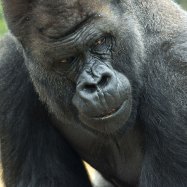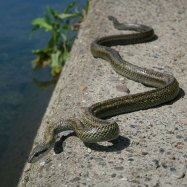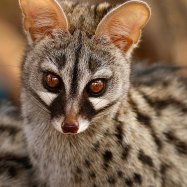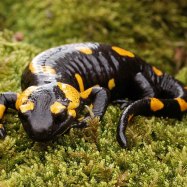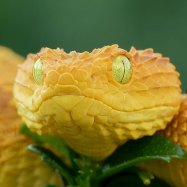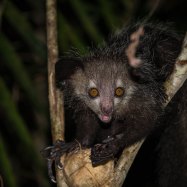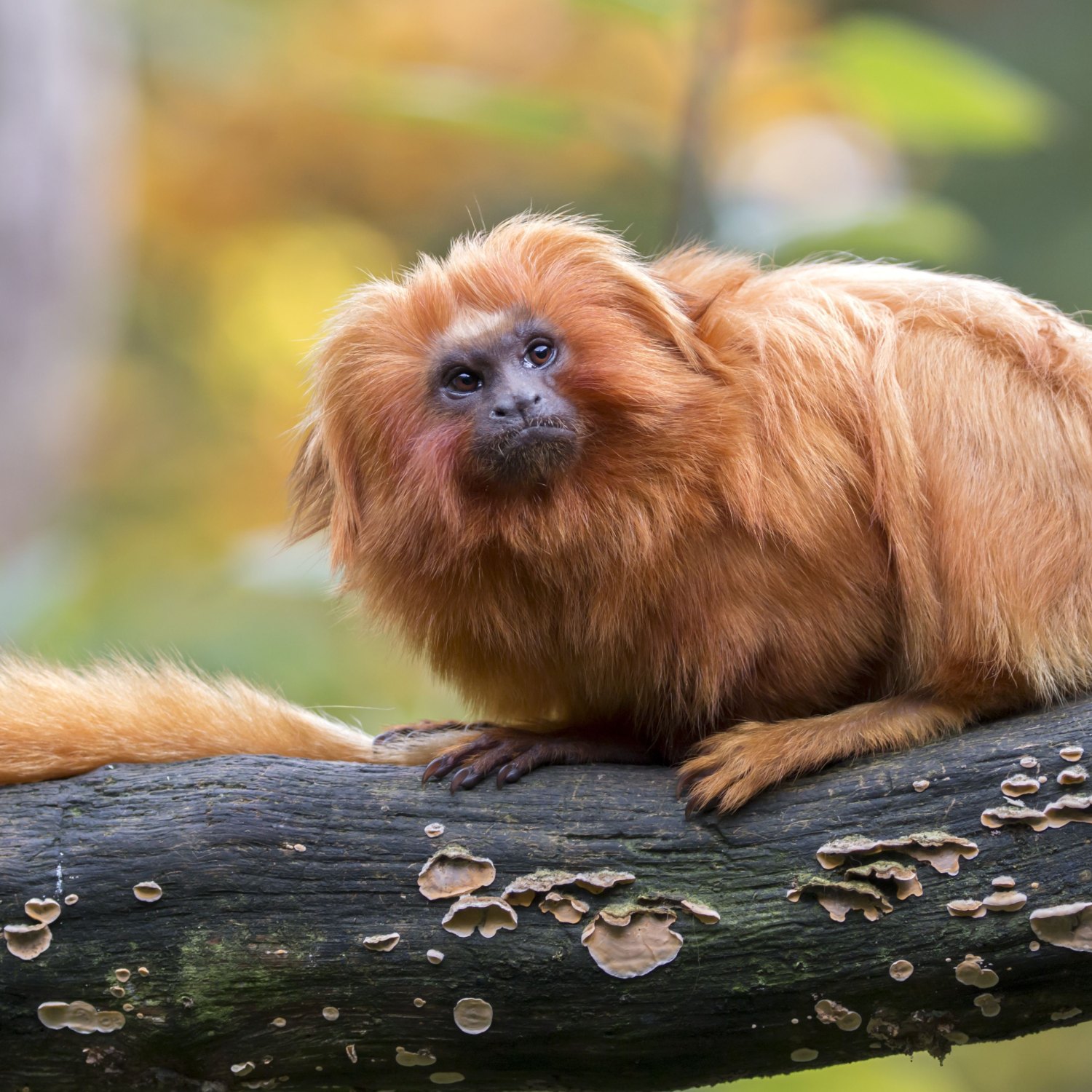
Golden Lion Tamarin
26 to 44 cm
Meet the Golden Lion Tamarin, a small and slender monkey found in the Atlantic coastal forests. With a length of 26 to 44 cm, it belongs to the Callitrichidae family and is known for its beautiful golden fur. Sadly, this species is endangered, with only around 3,200 individuals left in the wild. Let's spread awareness and protect these precious animals. #GoldenLionTamarin #EndangeredSpecies #AtlanticForests
Animal Details Summary:
Common Name: Golden Lion Tamarin
Kingdom: Animalia
Habitat: Tropical rainforests
The Majestic Golden Lion Tamarin: A Rare Beauty in the Tropical Rainforests of Brazil
Deep in the heart of the Brazilian Atlantic coastal forests, a creature of pure beauty roams the lush greenery. With its vibrant golden fur and striking features, the Golden Lion Tamarin stands out as one of the most captivating and rare animals in the world. Its unique appearance, behavior, and significance in its ecosystem make it a fascinating subject to explore. Join me on a journey to discover the extraordinary world of the Golden Lion Tamarin Golden Lion Tamarin.The Scientific Name and Common Name of the Golden Lion Tamarin
The scientific name of the Golden Lion Tamarin is Leontopithecus rosalia, derived from the Greek words leonto meaning "lion" and pithikos meaning "ape." This name is a nod to the tamarin's mane of golden fur that resembles a lion's mane. It is also known by its common name, Golden Lion Tamarin, which is often shortened to Tamarin.The Golden Lion Tamarin's Classification
The Golden Lion Tamarin falls under the Kingdom Animalia, which includes all organisms that are multicellular, heterotrophic, and have cells with a nucleus. It belongs to the Phylum Chordata, which encompasses all animals with a notochord, and the subphylum Vertebrata, meaning it has a backbone. The Golden Lion Tamarin is further classified under the Class Mammalia, which includes all mammals, and the Order Primates, which includes apes, monkeys, and lemurs.The Golden Lion Tamarin's Family
The Golden Lion Tamarin belongs to the Family Callitrichidae, known as the marmosets and tamarins. This family is characterized by small size, claws instead of nails, and a specialized diet of gum and sap. The Golden Lion Tamarin is one of the largest members of this family, measuring up to 44 cm in length and weighing between 400 to 700 g Glen Of Imaal Terrier.The Golden Lion Tamarin's Habitat and Distribution
The tropical rainforests of Brazil are home to the Golden Lion Tamarin. This species is endemic to the Atlantic coastal forests, specifically in the states of Rio de Janeiro and Sao Paulo. These forests are located in the eastern part of Brazil, extending along the Atlantic coast from Rio de Janeiro to the Brazilian border with Uruguay. These rainforests are known for their high levels of biodiversity, making them one of the world's most significant hotspots for conservation efforts.Despite their narrow range, Golden Lion Tamarins can be found in a variety of habitats within the rainforest, from dense lowland forests to more open areas with scattered trees. They prefer to live at elevations between 300 to 1000 meters, but can also be found as high as 1300 meters above sea level.
The Feeding Method and Omnivorous Diet of the Golden Lion Tamarin
As omnivores, Golden Lion Tamarins have a diverse diet. They primarily feed on insects, spiders, fruit, nectar, and plant gums. Their sharp claws and long fingers allow them to probe small crevices and extract insects from tree bark. They also have a specialized lower incisor tooth that is used to pry open cracks in the bark to access insects. The Golden Lion Tamarin uses its sharp canine teeth to puncture fruits and extract the juice and pulp, while its long fingers allow it to hold onto branches while eating.Their main source of food is Sapajus nigritus trees, also known as the "monkey tree," which produces sap that is a vital part of their diet. Unlike other tamarin species, Golden Lion Tamarins do not have the specialized digestive enzymes needed to process sap. Instead, they have a symbiotic relationship with a type of yeast that resides in their stomachs and breaks down the sugar in the sap, providing them with a source of energy.
The Significance of the Golden Lion Tamarin in its Ecosystem
Golden Lion Tamarins play a crucial role in their ecosystem. As seed dispersers, they help with the regeneration of forest plants and contribute to the overall health and diversity of the rainforest. They also play a role in controlling insect populations, especially those that are a threat to the health of trees.Furthermore, Golden Lion Tamarins are preyed upon by larger predators such as raptors, snakes, and ocelots. Their presence in the forest ecosystem provides a food source for these predators, helping to maintain a balanced eco-system.
The Physical Appearance of the Golden Lion Tamarin
With its striking golden fur, the Golden Lion Tamarin is a unique and beautiful creature. Its fur is soft and thick, with a mane of golden hair that runs from its head down to its shoulders. Its face has dark fur, giving the appearance of a dark mask. The fur on its arms and legs is a slightly lighter shade of gold, while the fur on its stomach is white. This coloration provides excellent camouflage in the dappled light of the rainforest.The Golden Lion Tamarin has a small and slender body shape, with a long tail that makes up almost half of its body length. The males are slightly larger than the females, with longer manes and a more robust build. They also have sharp canines that they use for defensive purposes and to access food.
The Behavior of the Golden Lion Tamarin
The Golden Lion Tamarin is an active and social species. They are diurnal, meaning they are most active during the day. They have a complex social structure that revolves around monogamous pairs and their offspring. The male and female pair form a strong bond and share responsibility for caring for their young.Golden Lion Tamarins are also territorial and mark their territory with scent glands on their chest and around their faces. They communicate with various vocalizations, including screams, barks, and whistles. These vocalizations help them communicate within their group in the dense rainforest, and also serve as a way to ward off other groups from their territory.
The Threats to the Golden Lion Tamarin
Unfortunately, the Golden Lion Tamarin is facing many challenges in its natural habitat. Its habitat is rapidly disappearing due to deforestation for commercial activities like logging and agriculture. They are also at risk of poaching for the illegal pet trade. The International Union for Conservation of Nature (IUCN) has listed the Golden Lion Tamarin as an endangered species, with only around 3,200 left in the wild.The Efforts to Protect the Golden Lion Tamarin
Conservationists and scientists have been working tirelessly to protect and preserve the Golden Lion Tamarin. Through habitat restoration and protection efforts, such as the creation of nature reserves and protective corridors between fragmented forest patches, their habitat is slowly recovering. The Golden Lion Tamarin Association, formed in 1984, has been instrumental in raising awareness and funds for conservation efforts. They have also successfully reintroduced Golden Lion Tamarins into protected areas from where they had previously disappeared.Educational programs and ecotourism have also helped raise awareness and support for protecting this precious species. By visiting the rainforests and learning about the Golden Lion Tamarin, tourists can contribute to local eco-tourism initiatives that help support conservation efforts.
In Conclusion
The Golden Lion Tamarin is truly a remarkable and majestic creature that captures the hearts of all who encounter it. Its unique appearance, behavior, and role in its ecosystem make it a valuable and significant species. By understanding the threats they face and the efforts being made to protect them, we can all do our part to ensure the survival of this incredible animal for generations to come. Let us continue to appreciate and admire the Golden Lion Tamarin and work towards a world where they can thrive in the wild.

Golden Lion Tamarin
Animal Details Golden Lion Tamarin - Scientific Name: Leontopithecus rosalia
- Category: Animals G
- Scientific Name: Leontopithecus rosalia
- Common Name: Golden Lion Tamarin
- Kingdom: Animalia
- Phylum: Chordata
- Class: Mammalia
- Order: Primates
- Family: Callitrichidae
- Habitat: Tropical rainforests
- Feeding Method: Omnivorous
- Geographical Distribution: Atlantic coastal forests of Brazil
- Country of Origin: Brazil
- Location: Atlantic coastal forests
- Animal Coloration: Golden
- Body Shape: Small and slender
- Length: 26 to 44 cm
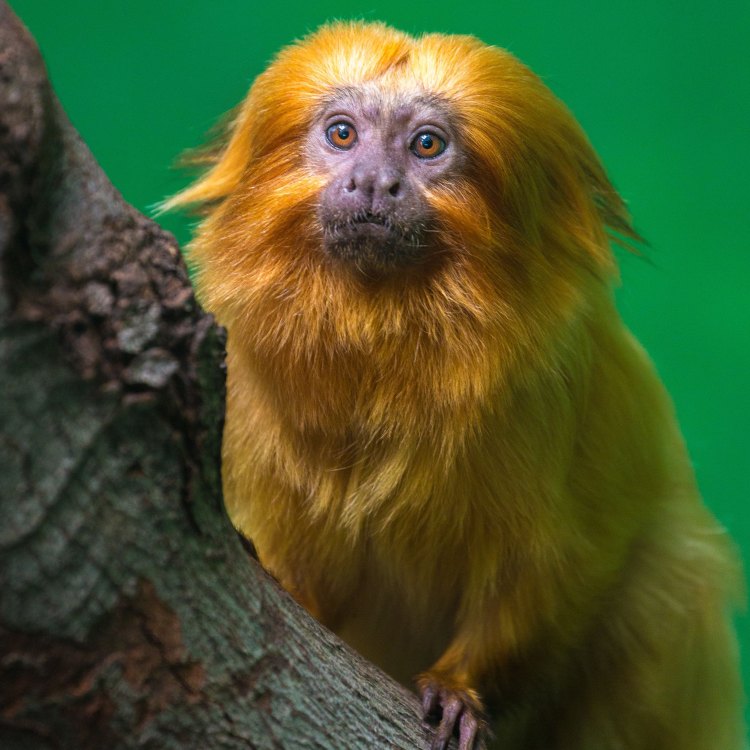
Golden Lion Tamarin
- Adult Size: 26 to 44 cm
- Average Lifespan: 15 to 20 years
- Reproduction: Sexual
- Reproductive Behavior: Monogamous
- Sound or Call: High-pitched trills and calls
- Migration Pattern: Non-migratory
- Social Groups: Family groups
- Behavior: Diurnal
- Threats: Habitat loss, illegal pet trade
- Conservation Status: Endangered
- Impact on Ecosystem: Seed dispersal
- Human Use: Tourism attraction
- Distinctive Features: Mane-like fur around the face
- Interesting Facts: They can leap up to 15 feet in a single bound
- Predator: Birds of prey, wild cats
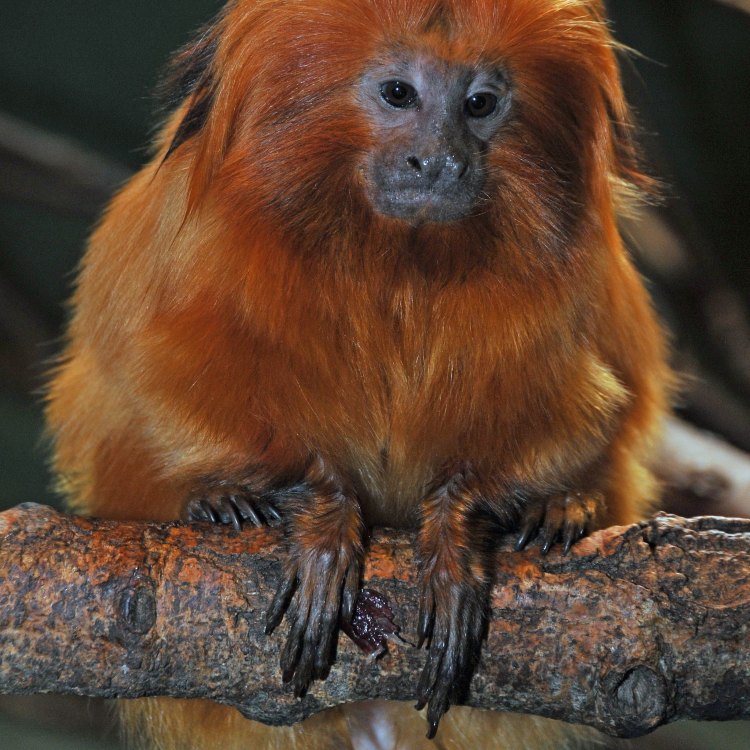
Leontopithecus rosalia
The Golden Lion Tamarin: A Small Primate with a Mighty Impact
In the dense rainforests of Brazil, a small and lively primate is swinging from tree to tree, its distinctive mane-like fur around the face catching the sunlight. This is the Golden Lion Tamarin, a species of monkey known not only for its striking appearance but also for its unique characteristics and important role in its ecosystem. In this article, we will delve into the world of the Golden Lion Tamarin and discover what makes this tiny primate so special.Adult Size and Reproduction
The Golden Lion Tamarin is one of the smallest primates in the world, with adults measuring between 26 to 44 cm in length PeaceOfAnimals.Com. Despite its small size, it is known for its quick and energetic movements, swinging through the trees with ease thanks to its long limbs and sharp nails.
Like most primates, the Golden Lion Tamarin is a sexually reproducing species, with both males and females reaching sexual maturity at around 2 years of age. They typically mate for life, forming monogamous pairs and staying together throughout their lifetimes. This strong bond between mates is just one of the unique aspects of the Golden Lion Tamarin’s reproductive behavior.
High-pitched Calls
One of the most striking features of the Golden Lion Tamarin is its high-pitched trills and calls, which can be heard throughout the rainforest. These sounds serve as a form of communication between individuals, helping them to locate each other and stay in contact. It is also believed that these calls play a role in territorial and mating behaviors, making them an essential aspect of the Golden Lion Tamarin’s social life.
Non-migratory Nature
Unlike many other species of animals, Golden Lion Tamarins do not migrate from one place to another in search of food or better living conditions. They are known to be non-migratory, staying within their home ranges throughout their lifetimes Green Aphids. This may be due to their strong social bonds and the fact that they adapt well to their habitats, making it unnecessary for them to move around.
Strong Family Units
Golden Lion Tamarins live in family groups consisting of a bonded male and female pair and their offspring. These family units are close-knit and are known to display strong social behaviors, such as grooming and caring for each other’s young. This cooperative living arrangement allows the Golden Lion Tamarin to thrive in its habitat and maintain a healthy population.
Diurnal Behavior
The Golden Lion Tamarin is a diurnal animal, meaning it is most active during the day and sleeps at night. This is a common behavior among primates, and it allows them to take full advantage of the sunlight and forage for food during the day. In contrast, their predators such as wild cats and birds of prey, are mostly nocturnal, providing another layer of protection for the Golden Lion Tamarin.
Habitat Loss and Illegal Pet Trade
Unfortunately, the Golden Lion Tamarin’s survival is under threat due to human activities. The main threat to their survival is habitat loss, as their rainforest habitat is being destroyed at an alarming rate for agriculture, logging, and urbanization. This destruction of their habitat has left the Golden Lion Tamarin with limited resources and space, making it difficult for them to thrive.
In addition to habitat loss, the Golden Lion Tamarin is also victims of the illegal pet trade. They are seen as exotic pets and are often captured and sold on the black market. This has had a significant impact on their population in the wild, and has caused an increase in inbreeding, leading to a decrease in genetic diversity and increased susceptibility to diseases.
Endangered Species and Conservation Efforts
Due to these threats, the Golden Lion Tamarin is currently listed as an endangered species, with a population of less than 2,500 individuals in the wild. To protect this unique and vital species, conservation efforts have been put in place. These efforts include protecting their natural habitat, implementing laws against the illegal pet trade, and establishing breeding programs in captivity to increase their population.
Impact on Ecosystem: Seed Dispersal
The Golden Lion Tamarin may be small, but it plays a significant role in its ecosystem. As frugivores, they primarily feed on fruits, flowers, and insects, and play a crucial role in seed dispersal. Their diet consists of a wide variety of fruits, and as they travel through the forest, they aid in seed dispersal by consuming fruits and passing the seeds in their droppings. This helps to disperse the seeds and promote the growth of new trees, ensuring the diversity and health of the rainforest.
Human Use and Tourism
Apart from its vital role in the ecosystem, the Golden Lion Tamarin also has significance in human use. Being a beautiful and unique species, they are often used as an attraction in ecotourism, bringing in revenue for local communities and improving their economy. This allows for a sustainable way for humans to interact with these primates and appreciate their beauty without causing harm.
Distinctive Features: Mane-Like Fur and Impressive Leaping Abilities
The Golden Lion Tamarin is easily recognized by its mane-like fur that surrounds its face, giving it a regal appearance. This fur is actually a specialized adaptation, which is thought to act as a defense mechanism against predators, making it seem larger and more intimidating. In reality, the Golden Lion Tamarin is only about the size of a squirrel.
Apart from its unique fur, the Golden Lion Tamarin is also known for its impressive leaping abilities. They can leap up to 15 feet in a single bound, allowing them to cover significant distances and evade predators with ease. This is just another example of the incredible adaptability and agility of this small primate.
In Conclusion
The Golden Lion Tamarin may be small, but it has a mighty impact on its ecosystem. From its distinctive appearance and behavior to its crucial role in seed dispersal, this species has captured the hearts of many and is a vital part of the rainforest ecosystem. However, its survival is threatened by habitat loss and the illegal pet trade, making it essential for us to take action and protect this unique species. By understanding and appreciating the Golden Lion Tamarin, we can work towards its conservation and ensure that future generations will get to witness the majestic mane and impressive leaps of this small but significant primate.
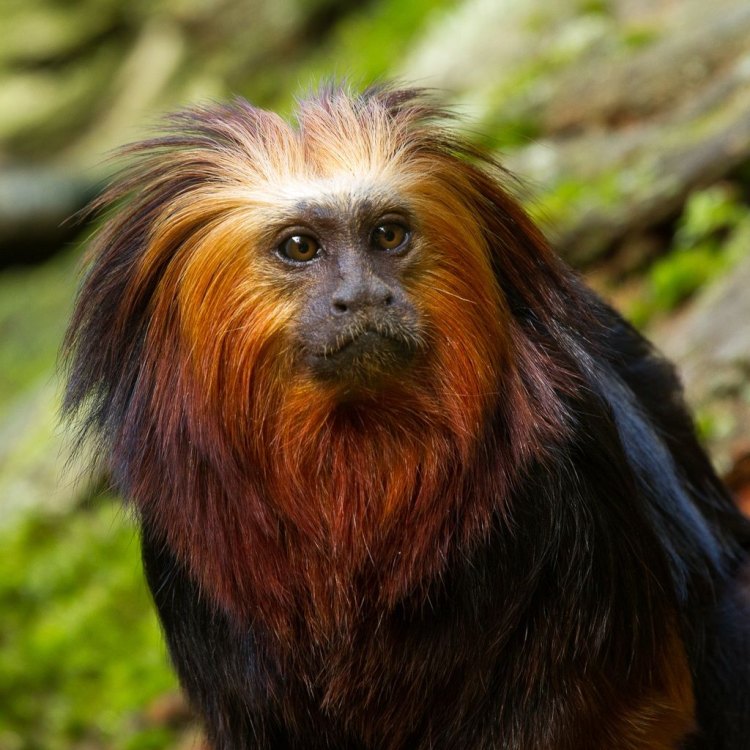
The Majestic Golden Lion Tamarin: A Rare Beauty in the Tropical Rainforests of Brazil
Disclaimer: The content provided is for informational purposes only. We cannot guarantee the accuracy of the information on this page 100%. All information provided here may change without prior notice.


